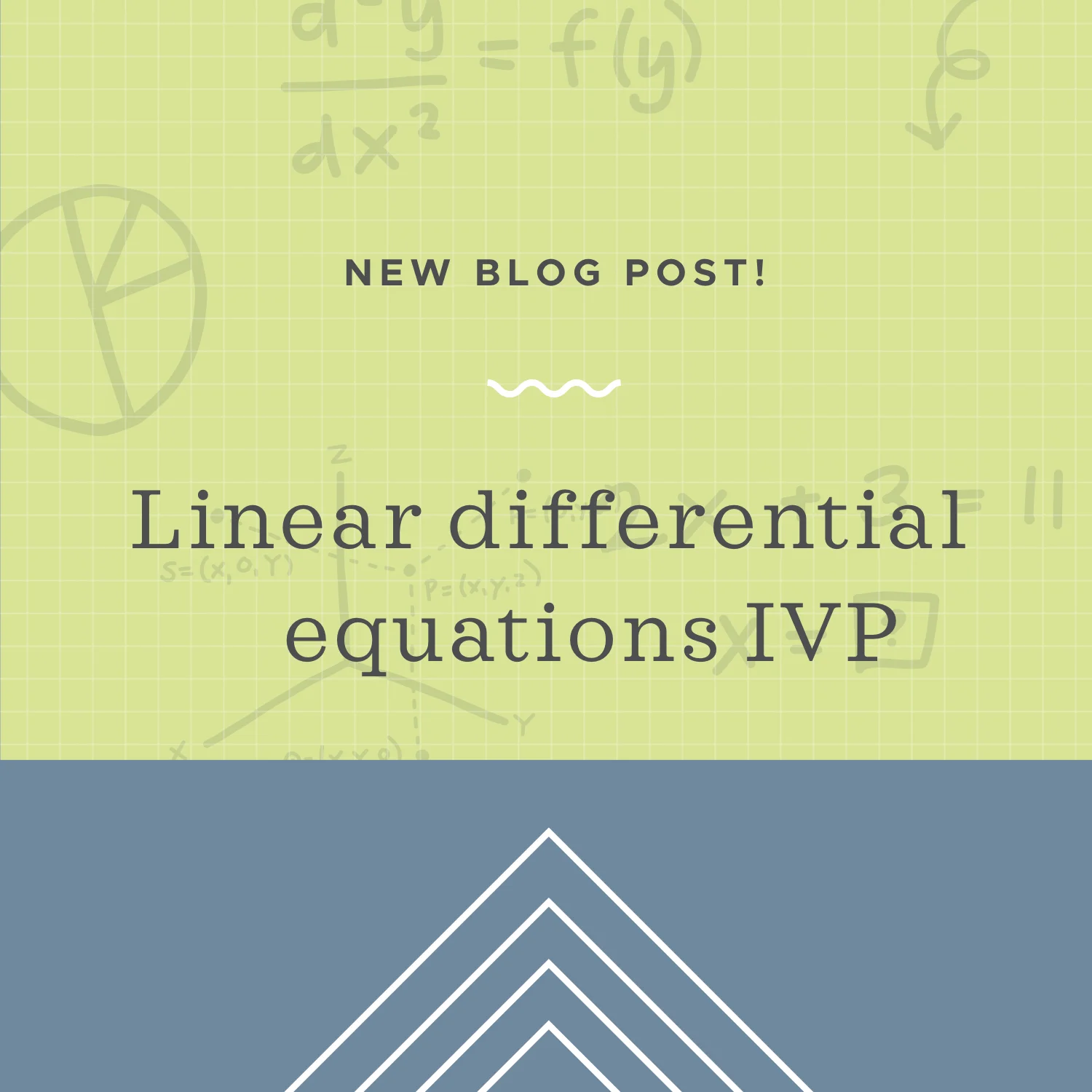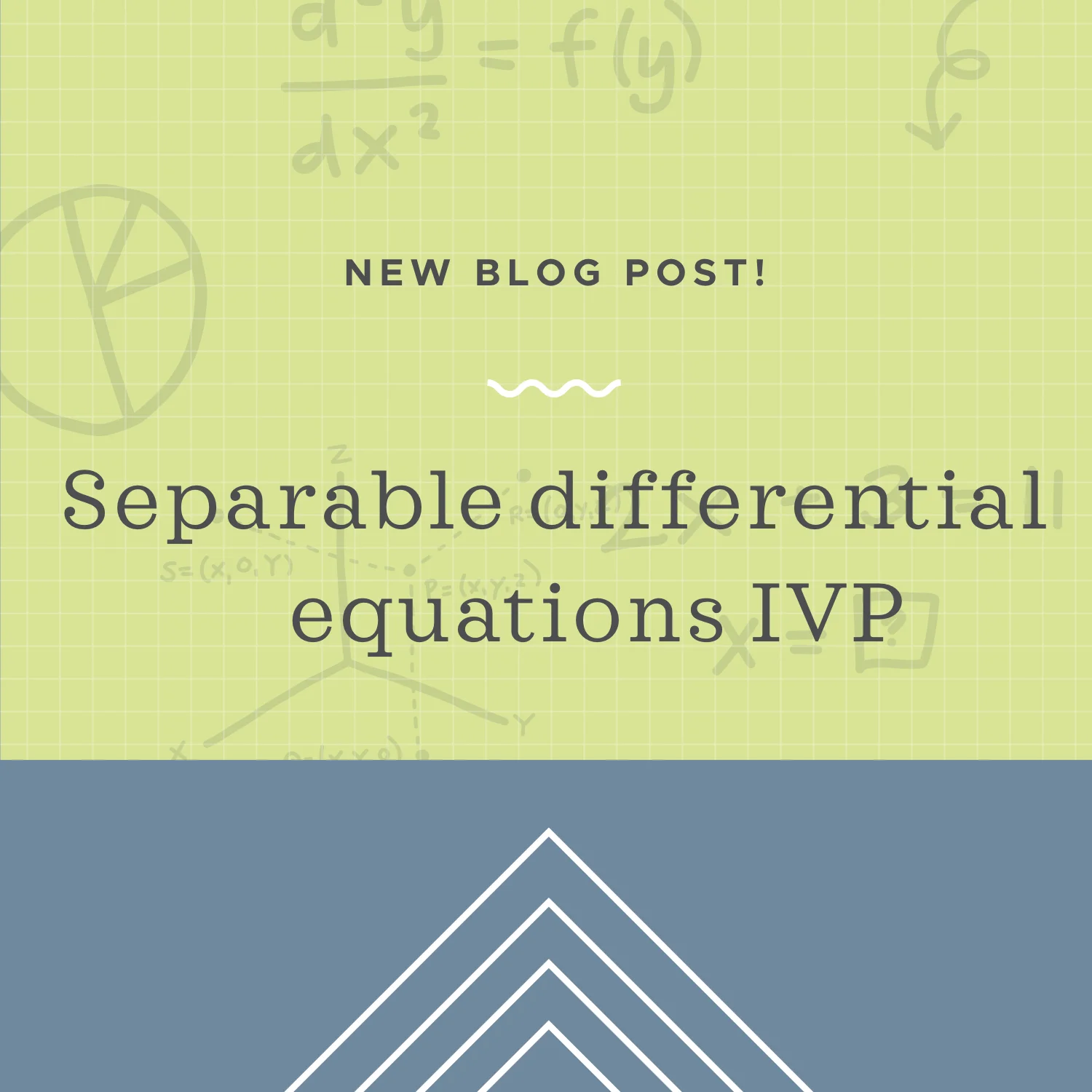In the last lesson about linear differential equations, all the general solutions we found contained a constant of integration, C. But we’re often interested in finding a value for C in order to generate a particular solution for the differential equation. This applies to linear differential equations, but also to any other form of differential equation. The information we’ll need in order to find C is an initial condition, which is the value of the solution at a specific point.
Read MoreConvolution integrals are particularly useful for finding the general solution to a second order differential equation in the form ay''+by'+cy=g(t). Notice in this equation that the forcing function g(t) is not defined explicitly. Without a convolution integral, we wouldn’t be able to find the solution to this kind of differential equation, even given initial conditions.
Read MoreIn general, to solve the initial value problem, we’ll follow these steps: 1. Make sure the forcing function is being shifted correctly, and identify the function being shifted. 2. Apply a Laplace transform to each part of the differential equation, substituting initial conditions to simplify. 3. Solve for Y(s). 4. Apply an inverse transform to find y(t).
Read MoreWe already know how to solve an initial value problem for a second-order homogeneous differential equation. Boundary value problems are very similar, but differ in a few important ways: 1) Initial value problems will always have a solution; boundary value problems may not, 2) The initial conditions given in an initial value problem relate to the general solution and its derivative; the initial conditions in a boundary value problem both relate to the general solution, not its derivative, and 3) The initial conditions given in an initial value problem are both for values of x0=0; the initial conditions given in a boundary value problem are for x0=a and x0=b.
Read MoreTo solve an initial value problem for a second-order nonhomogeneous differential equation, we’ll follow a very specific set of steps. We first find the complementary solution, then the particular solution, putting them together to find the general solution. Then we differentiate the general solution, plug the given initial conditions into the general solution and its derivative to create a system of linear equations, and then use the initial conditions to solve that system for the constant coefficients. Finally, we’ll plug those constant coefficients back into the general solution.
Read MoreWe’ve already learned how to find the complementary solution of a second-order homogeneous differential equation, whether we have distinct real roots, equal real roots, or complex conjugate roots. Now we want to find the particular solution by using a set of initial conditions, along with the complementary solution, in order to find the particular solution.
Read MoreWe already know how to find the general solution to a linear differential equation. But this solution includes the ambiguous constant of integration C. If we want to find a specific value for C, and therefore a specific solution to the linear differential equation, then we’ll need an initial condition, like f(0)=a. Given this additional piece of information, we’ll be able to find a value for C and solve for the specific solution.
Read MoreWe already know how to separate variables in a separable differential equation in order to find a general solution to the differential equation. When we’re given a differential equation and an initial condition to go along with it, we’ll solve the differential equation the same way we would normally, by separating the variables and then integrating. The constant of integration C that’s left over from the integration is the value we’ll be able to solve for using the initial condition.
Read MoreWe always lose the constant (term without a variable attached), when we take the derivative of a function. Which means we’re never going to get the constant back when we try to integrate our derivative. It’s lost forever. That is, unless we have an initial condition we can use to figure out what that constant was before we differentiated.
Read MoreTo use a Laplace transform to solve a second-order nonhomogeneous differential equations initial value problem, we’ll need to use a table of Laplace transforms or the definition of the Laplace transform to put the differential equation in terms of Y(s). Once we solve the resulting equation for Y(s), we’ll want to simplify it until we recognize that the terms in our equation match formulas in a table of Laplace transforms.
Read More











